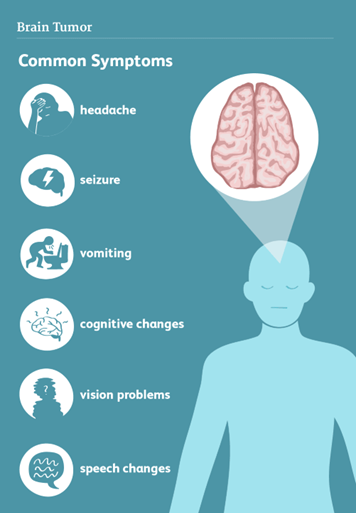The psychiatric nurse is caring for clients on an adolescent unit. Which client requires the nurse's immediate attention?
A 16-year-old client diagnosed with major depression who refuses to participate in group.
A 17-year-old client diagnosed with bipolar disorder who is pacing around the lobby.
An 18-year-old client with antisocial behavior who is being yelled at by other clients.
A 14-year-old client with anorexia nervosa who is refusing to eat the evening snack.
The Correct Answer is B
Choice A reason: A 16-year-old client diagnosed with major depression who refuses to participate in group does not require the nurse's immediate attention. Depression is a mood disorder that causes persistent feelings of sadness, hopelessness, and loss of interest. Refusing to participate in group may indicate low motivation, social withdrawal, or poor self-esteem, which are common symptoms of depression. The nurse should respect the client's preference and offer alternative activities or individual therapy.
Choice B reason: This client requires immediate intervention because pacing can be a sign of agitation, restlessness, or escalating mania. Clients with bipolar disorder in a manic phase may exhibit increased energy, impulsivity, irritability, and even aggression. If not addressed promptly, this behavior could escalate to disruptive outbursts, impulsive actions, or even violence toward themselves or others. The nurse should intervene by using calm communication, redirection, and possibly medication if prescribed to help de-escalate the situation and ensure safety.
Choice C reason: This scenario involves peer conflict, which is important to address, but it does not necessarily indicate an immediate risk of harm. Clients with antisocial behavior often engage in conflict due to manipulative or confrontational tendencies, but being yelled at does not mean they are in immediate danger. The nurse should monitor the situation and intervene to prevent escalation, but other safety concerns take priority.
Choice D reason: A 14-year-old client with anorexia nervosa who is refusing to eat the evening snack does not require the nurse's immediate attention. Anorexia nervosa is an eating disorder that causes extreme restriction of food intake and fear of weight gain. Refusing to eat the evening snack may indicate distorted body image, dietary rules, or anxiety, which are common factors of anorexia nervosa. The nurse should encourage the client to eat and provide support and education.
Nursing Test Bank
Naxlex Comprehensive Predictor Exams
Related Questions
Correct Answer is B
Explanation
Choice A: Notifying the emergency response team of the client's seizure is not a necessary action for the nurse, as the seizure has already stopped and there is no immediate threat to the client's life. This is a distractor choice.
Choice B: Keeping orienting the client to time and place until he is less confused is an appropriate action for the nurse, as this can help restore the client's cognitive function and reduce his anxiety after a seizure. Therefore, this is the correct choice.
Choice C: Explaining the postictal state that usually follows seizures is not a priority action for the nurse, as this can be done later when the client is more alert and receptive. This is another distractor choice.
Choice D: Asking the wife to wait outside the room until the nurse can talk with her is not a considerate action for the nurse, as this can increase her stress and worry about her husband's condition. This is a contraindicated choice.

Correct Answer is C
Explanation
Choice C is correct because serum potassium, calcium, and phosphorus are electrolytes that can be affected by ESRD. ESRD is a condition in which the kidneys lose their ability to filter waste products and excess fluids from the blood. This can cause electrolyte imbalances that can lead to serious complications, such as cardiac arrhythmias, bone disorders, or metabolic acidosis. The nurse should closely monitor these electrolytes and report any abnormal values.
Choice A is incorrect because blood pressure, heart rate, and temperature are vital signs that are not specific to ESRD. Vital signs can be influenced by many factors and may not reflect the severity of kidney damage. The nurse should monitor vital signs regularly, but not as closely as electrolytes.
Choice B is incorrect because leukocytes, neutrophils, and thyroxine are not laboratory results that are directly related to ESRD. Leukocytes and neutrophils are types of white blood cells that are involved in immune response and inflammation. Thyroxine is a hormone that regulates metabolism and growth. These laboratory results may be altered by other conditions or medications, but not by ESRD.
Choice D is incorrect because erythrocytes, hemoglobin, and hematocrit are laboratory results that measure the red blood cell count and oxygen-carrying capacity of the blood. These laboratory results may be decreased in ESRD due to anemia, which is a common complication of chronic kidney disease. However, anemia is not as life-threatening as electrolyte imbalances and can be treated with erythropoietin injections or iron supplements.
Whether you are a student looking to ace your exams or a practicing nurse seeking to enhance your expertise , our nursing education contents will empower you with the confidence and competence to make a difference in the lives of patients and become a respected leader in the healthcare field.
Visit Naxlex, invest in your future and unlock endless possibilities with our unparalleled nursing education contents today
Report Wrong Answer on the Current Question
Do you disagree with the answer? If yes, what is your expected answer? Explain.
Kindly be descriptive with the issue you are facing.
